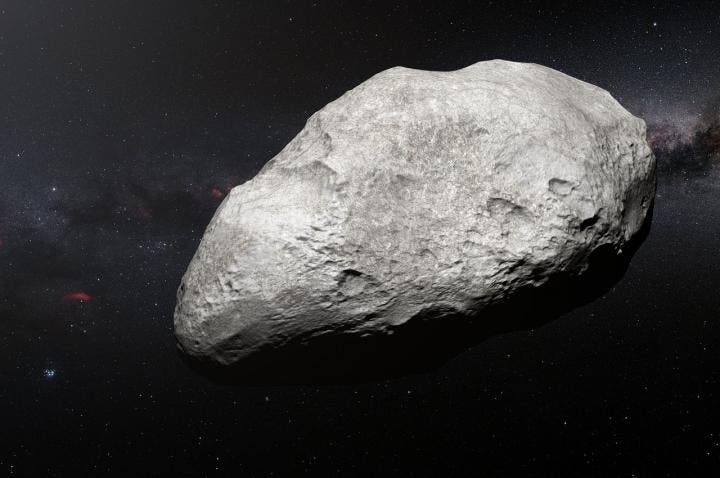In the dark, frozen wasteland that lies just beyond Neptune, few things really stand out — and now, astronomers have found one of them: a carbon-rich asteroid, the first asteroid of its kind to be discovered at the outskirts of our solar system.

It really shouldn’t be there, and as it so often happens in such studies, researchers first thought it was a mistake. Astronomers would have expected this kind of space rock in the asteroid belt between Mars and Jupiter but instead, it was drifting along just beyond Neptune.
The asteroid, which was named 2004 EW95, might be the first of a new class of space objects lurking the frigid area we call the Kuiper belt — the circumstellar disc in the outer Solar System, extending outward from the orbit of Neptune.
So how did the asteroid, which likely originated in the inner parts of our solar system, migrate so much?
It probably has a lot to do with our solar systems’ gas giants, which, in their infancies, caused quite a ruckus in the solar systems. During their early days, the gas giants probably orbited much closer to the Sun than they do today. But they started their outwards migration not long after the solar system was formed, and as they did so, they created all sorts of chaos.
Among this chaos, chunks of ice and rock such as 2004 EW95 were hurled away, which explains how it could have gotten there — and it also supports previous theoretical models of early planetary evolution. But even more interestingly, this means that the asteroid (and others of its kind) could provide insight as to how the solar system looked in its earlier days.
A lone rock far away from home
It’s not the first time objects that originated in the inner solar system were found so far away, but none were confirmed to the level of quality of 2004 EW95. It all started when Tom Seccull, a doctoral student at Queen’s University Belfast in Northern Ireland, used the European Southern Observatory’s Very Large Telescope to look at the light signatures of icy objects in the Kuiper Belt. When they found a 90-mile-long object, located 2.5 billion miles from Earth, something just wasn’t right — the object wasn’t exhibiting the same properties as its neighbors. Further analysis revealed that the object did not share the same icy past as other rocks drifting nearby. Instead, it appeared to have formed in a hotter environment, closer to the Sun.
“When we first looked at this, we thought it was wrong,” said Mr. Seccull, the lead author of the paper published in The Astrophysical Journal Letters. “The rock had been altered by the presence of liquid water.”
The team also determined the asteroid’s chemistry, using a technique called spectrometry. Since Kuiper Belt Object 2004 EW95 has a strong spectrum, its light can be broken down into different wavelengths, enabling researchers to determine what the asteroid is made of. However, identifying the chemical composition of such a distant object is extremely difficult.
The dramatic distance and the asteroid’s relatively small size make it an extremely difficult target to track, and the fact that it features carbon molecules, which makes it appear darker in color, doesn’t make it any easier.
“It’s like observing a giant mountain of coal against the pitch-black canvas of the night sky,” said Thomas Puzia, an astronomer at the Pontificia Universidad Católica de Chile and co-author of the research paper.
Still, the team was able to overcome these difficulties, finding that the asteroid contains carbon, iron oxides, and phyllosilicates (sheet-like silicate minerals). This is the first object ever found in the Kuiper belt containing these elements, all of which indicate that the asteroid formed in the inner parts of the Solar System.
With all this information, the research team concluded that 2004 EW95 probably formed between Mars and Jupiter, and was dragged along as the gas giants moved to their current orbits, thus offering important information about the dynamics of the early solar system.
We should also probably be thankful for this migration of the gas giants. Astronomers have found strong evidence that in many cases, these planets don’t move outwards, and stay in very close orbit to the Sun, creating what is called Hot Jupiters. Hot Jupiters are believed to deter the formation of rocky planets such as the Earth.
Whatsmore, as they migrate, they can destroy everything in their path, including the proto-Earth. So we should be grateful that they moved in just the right way to allow our planet to be formed, and ultimately, enable a species of primates we call humans emerge and evolve on this blue dot we claim as home.
The study “2004 EW95: A Phyllosilicate-bearing Carbonaceous Asteroid in the Kuiper Belt” by T. Seccull et al., which appeared in The Astrophysical Journal Letters.






